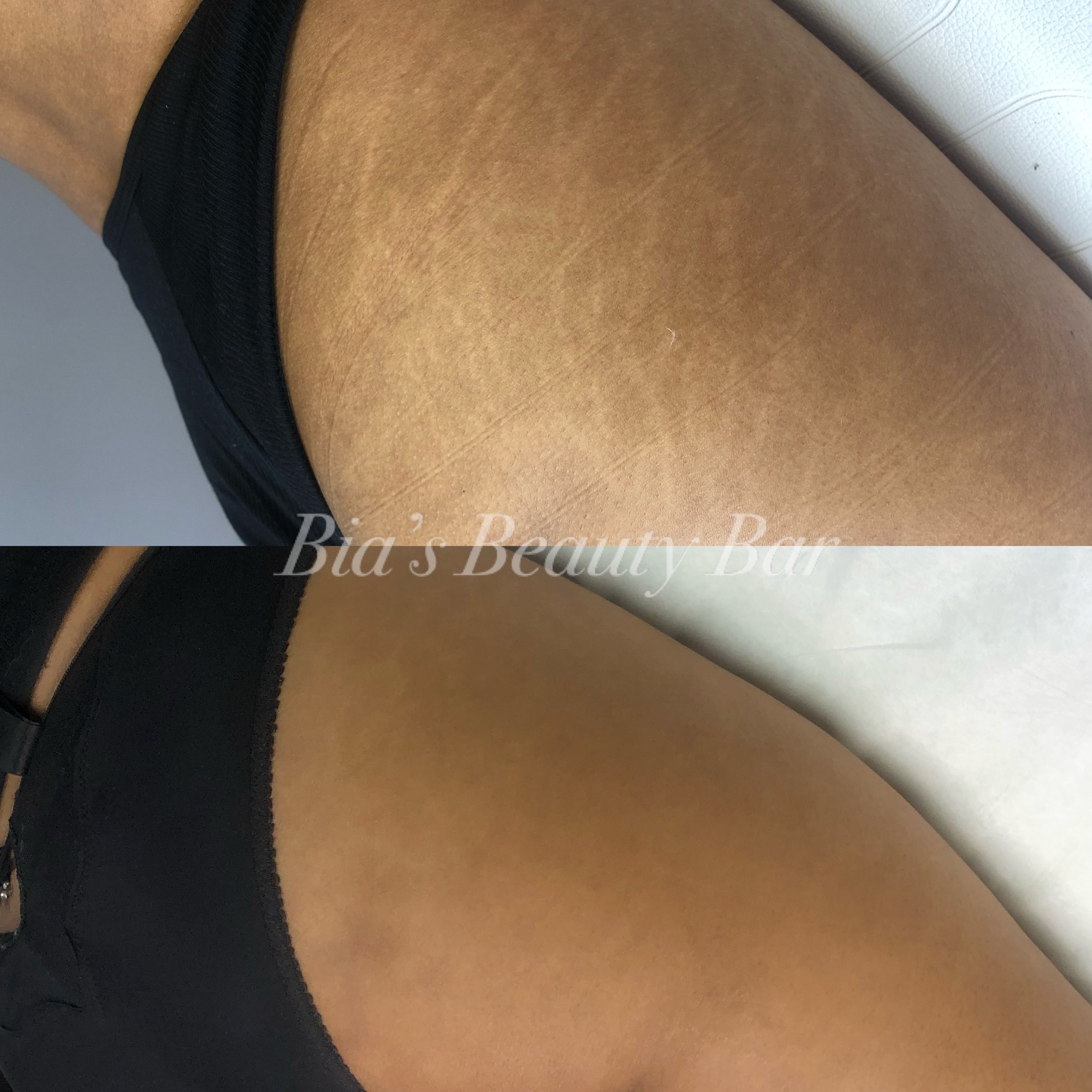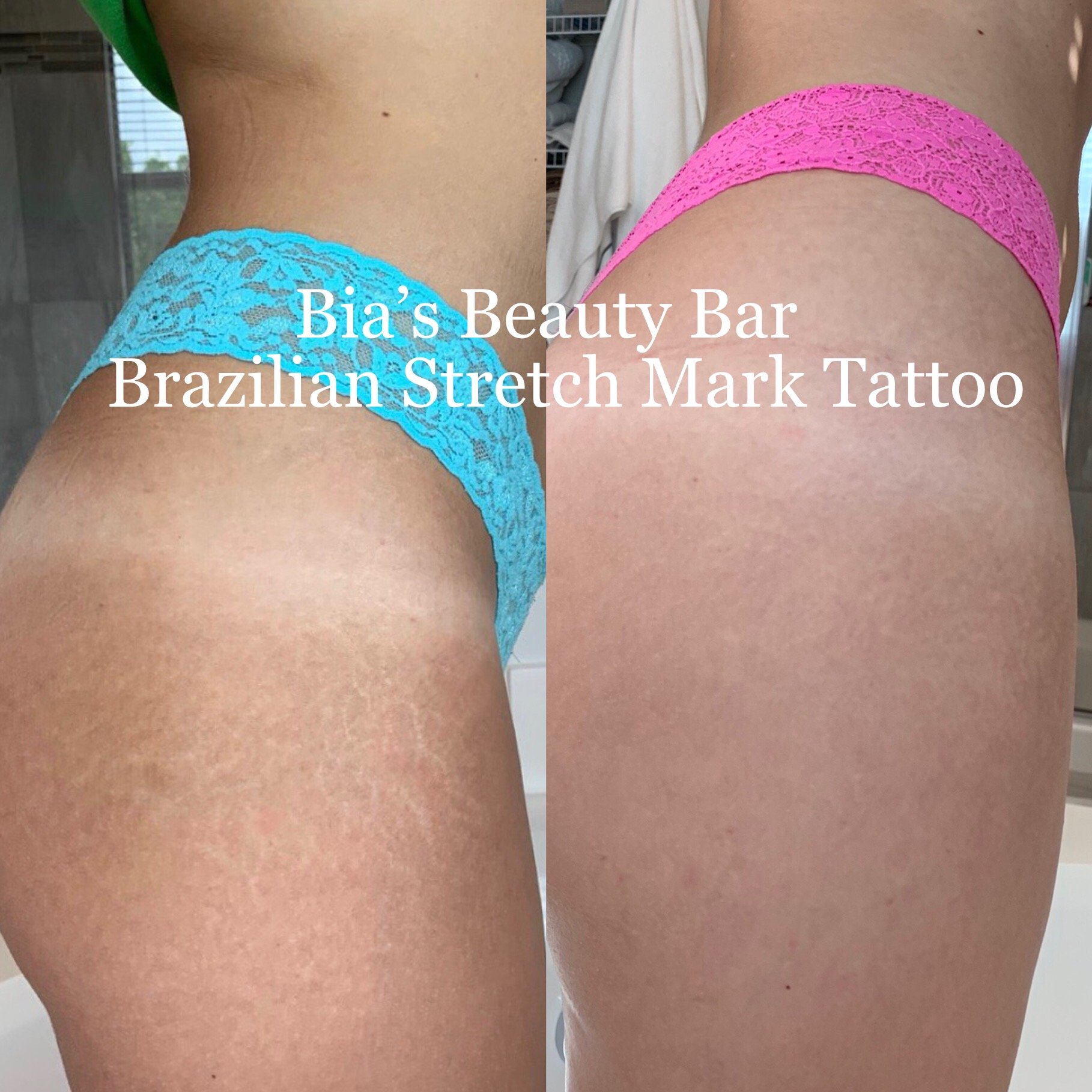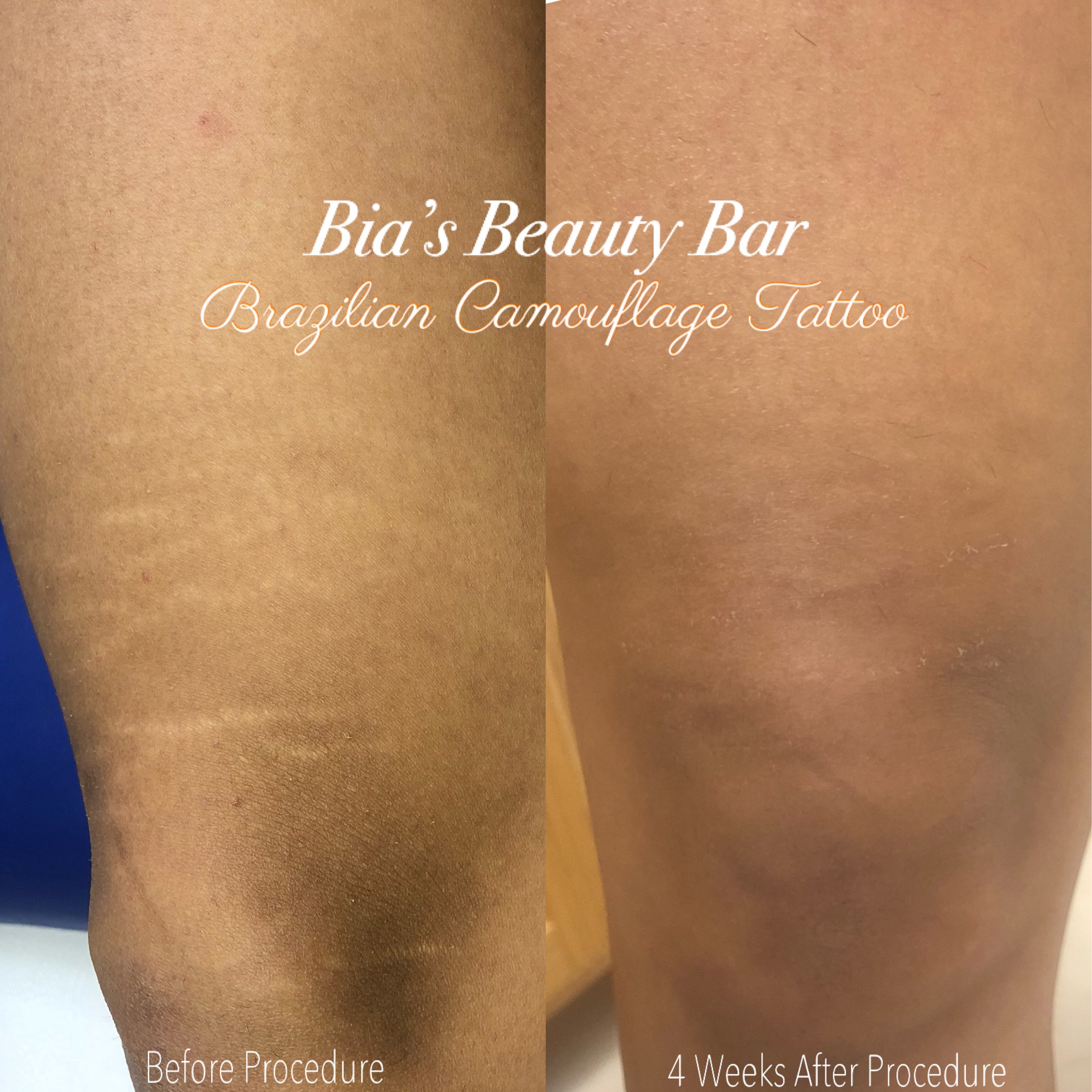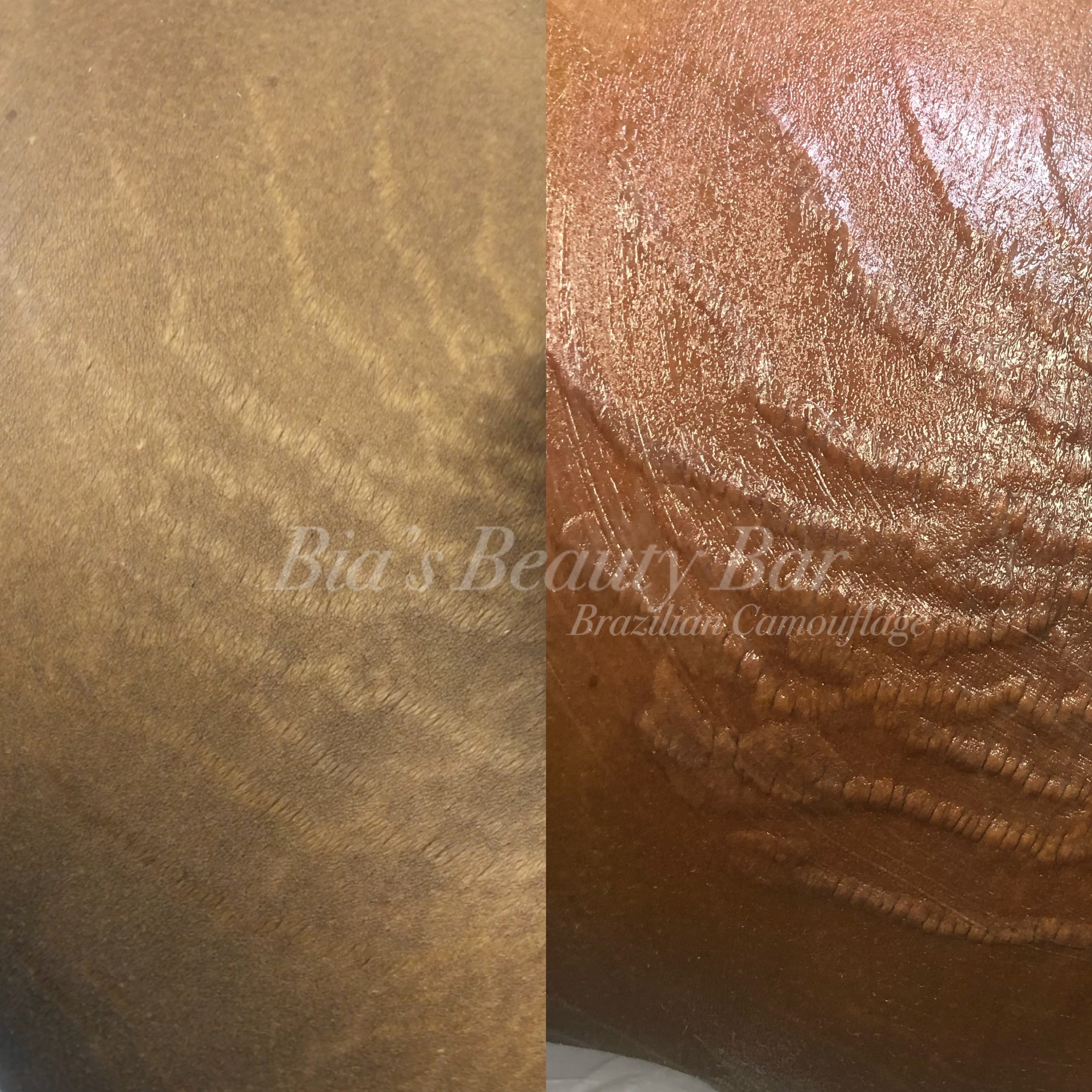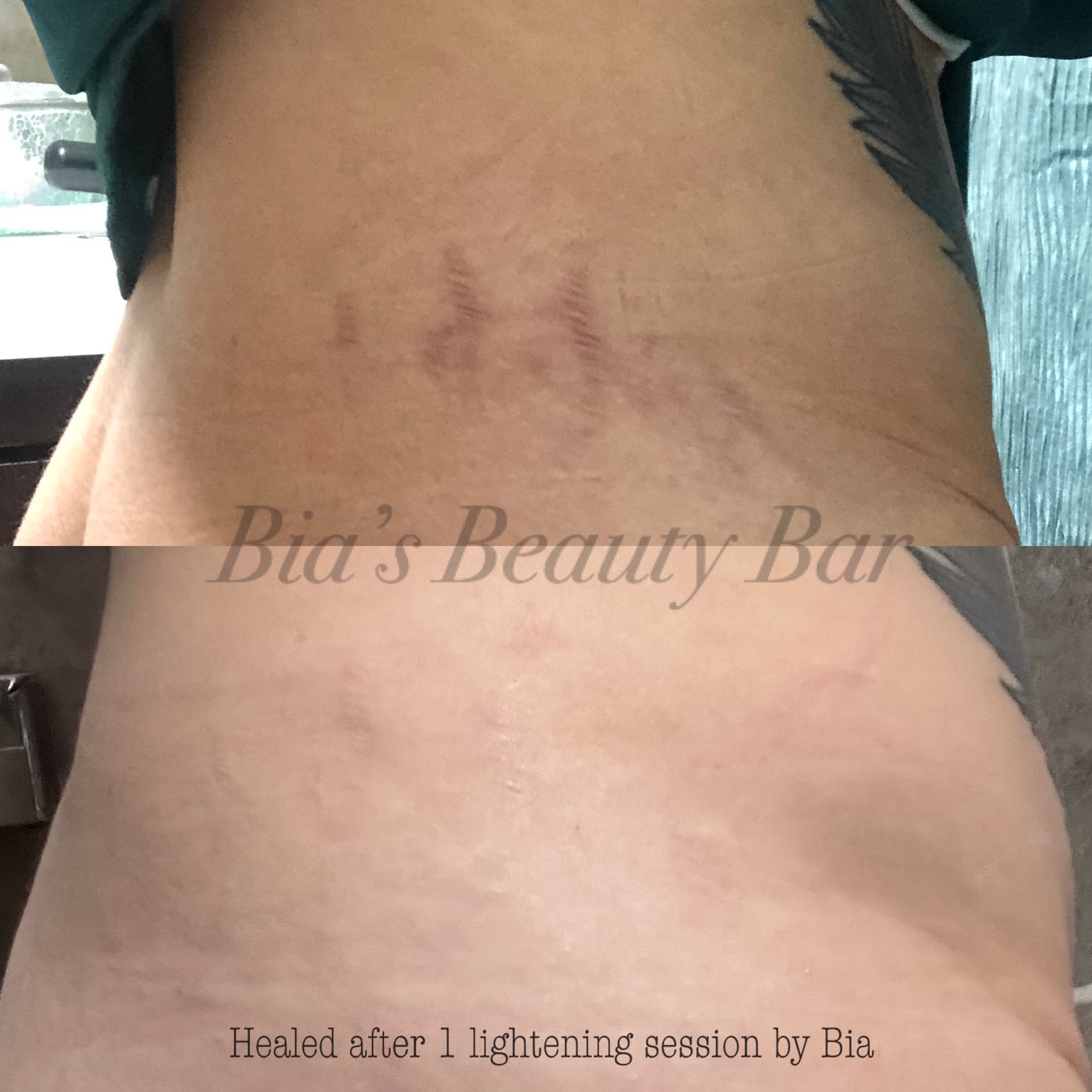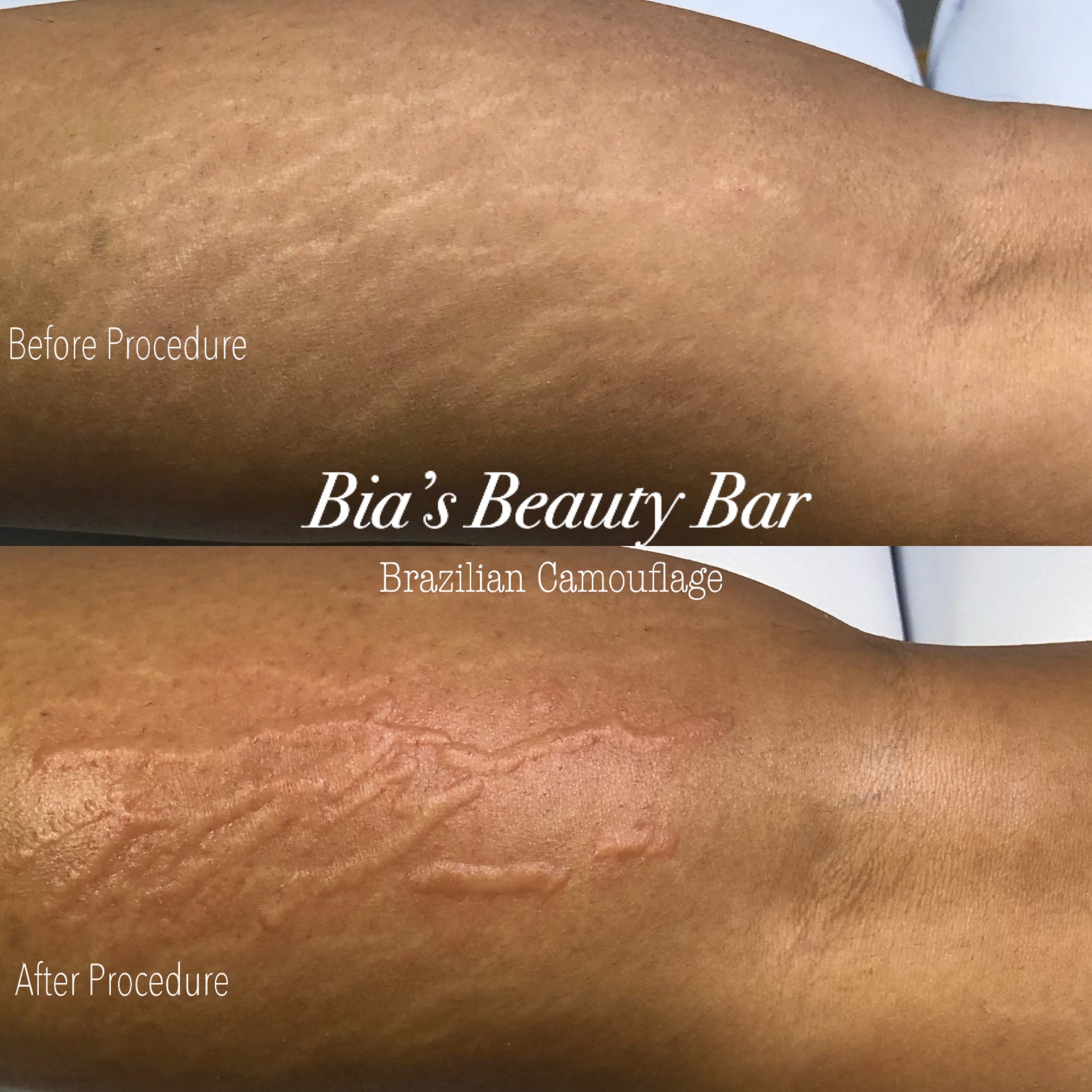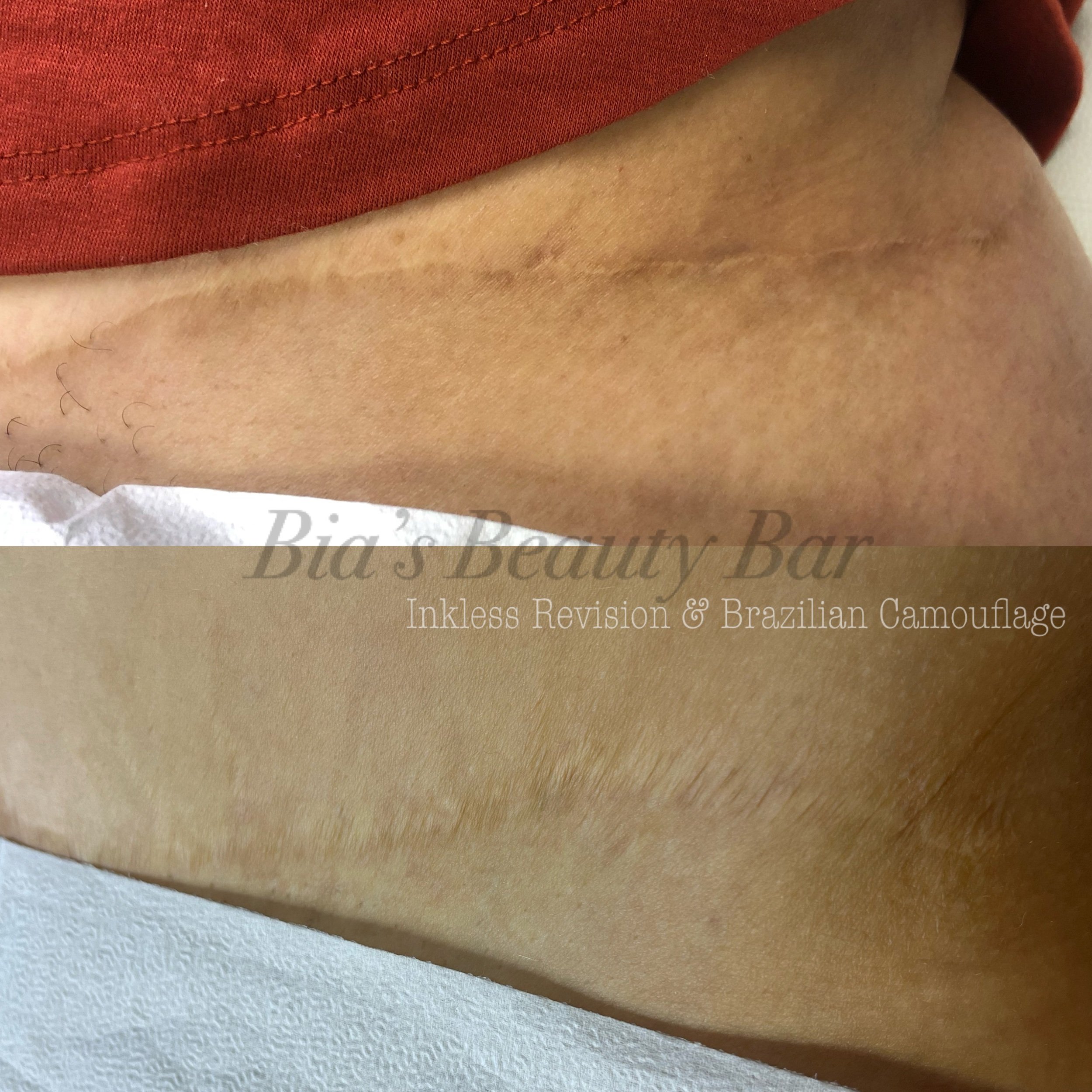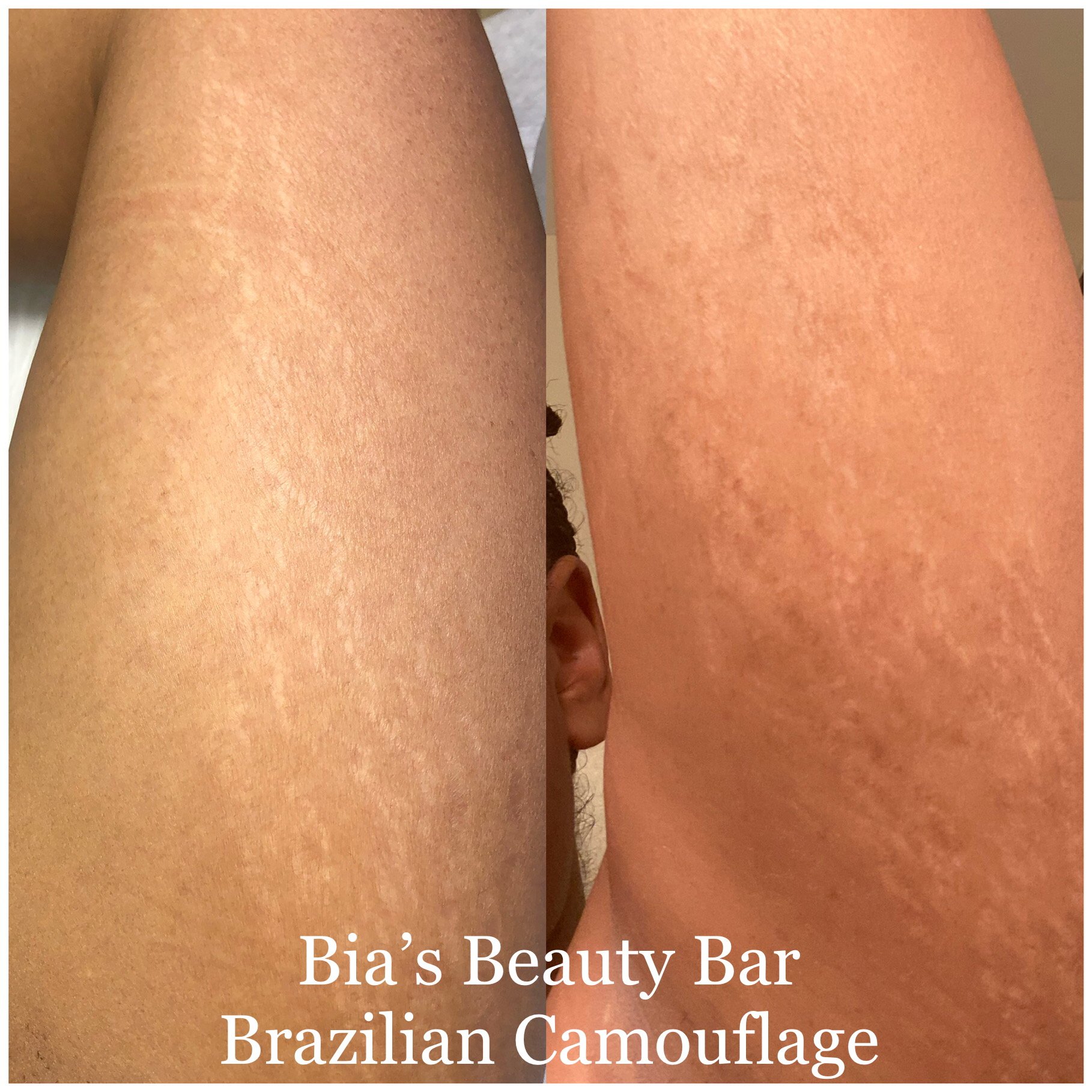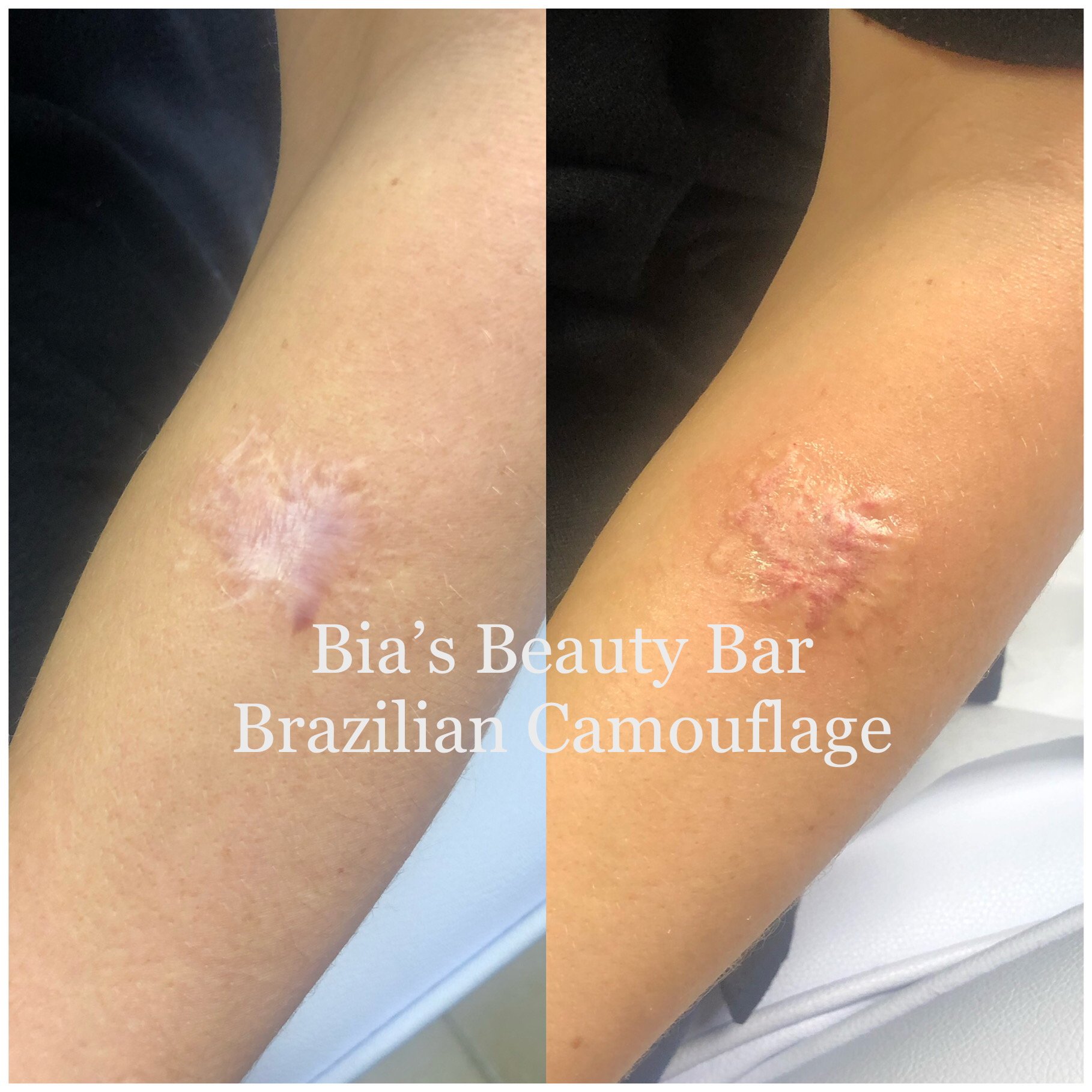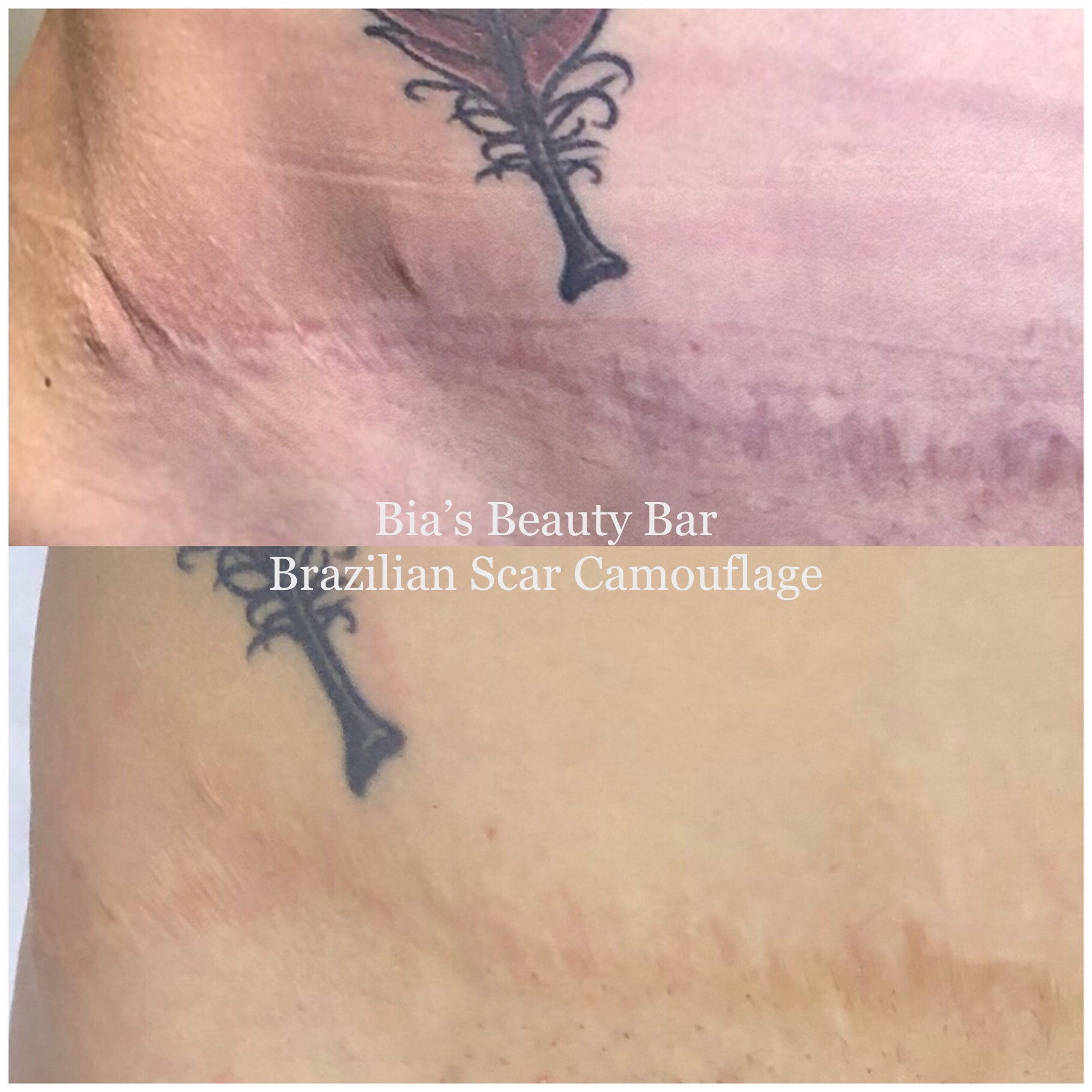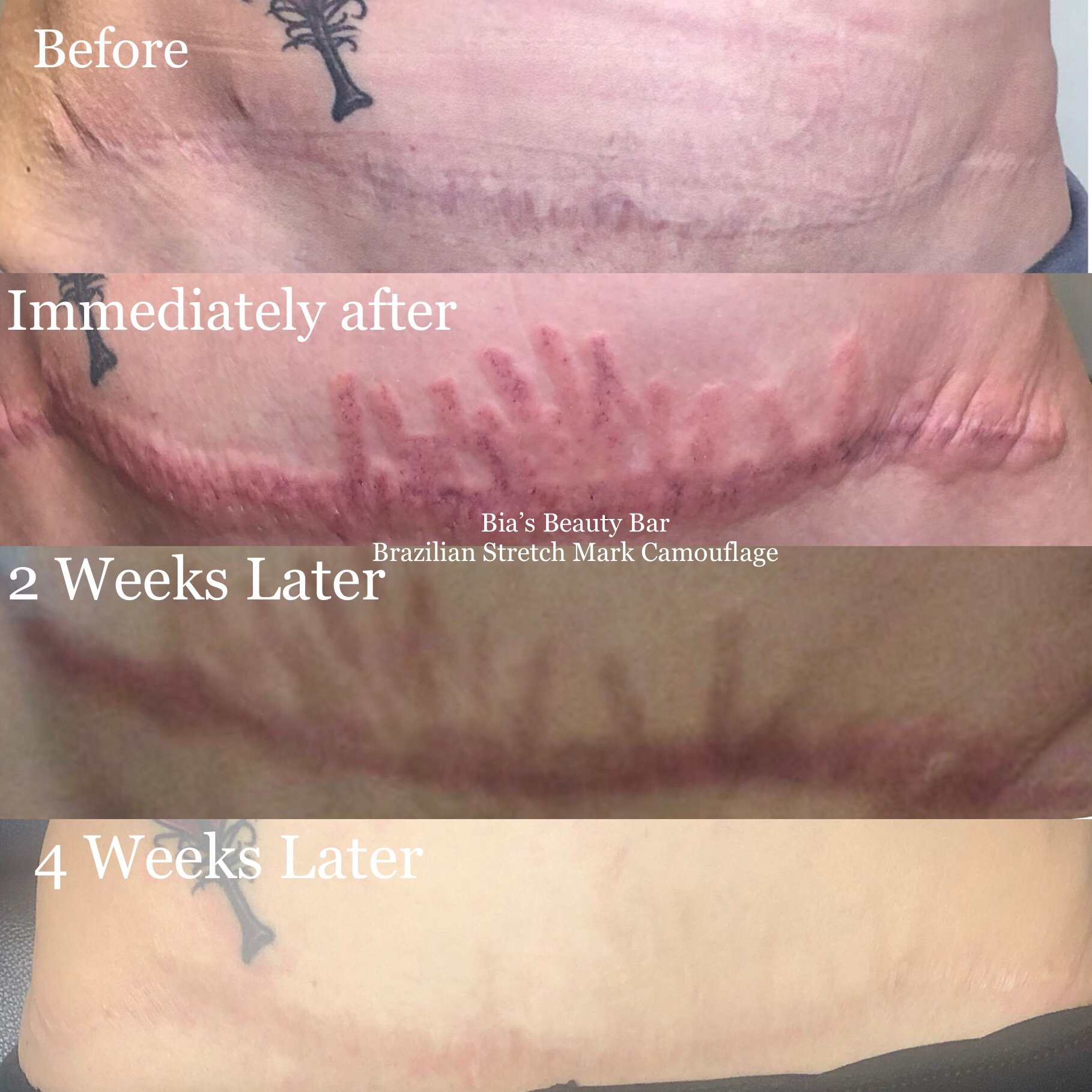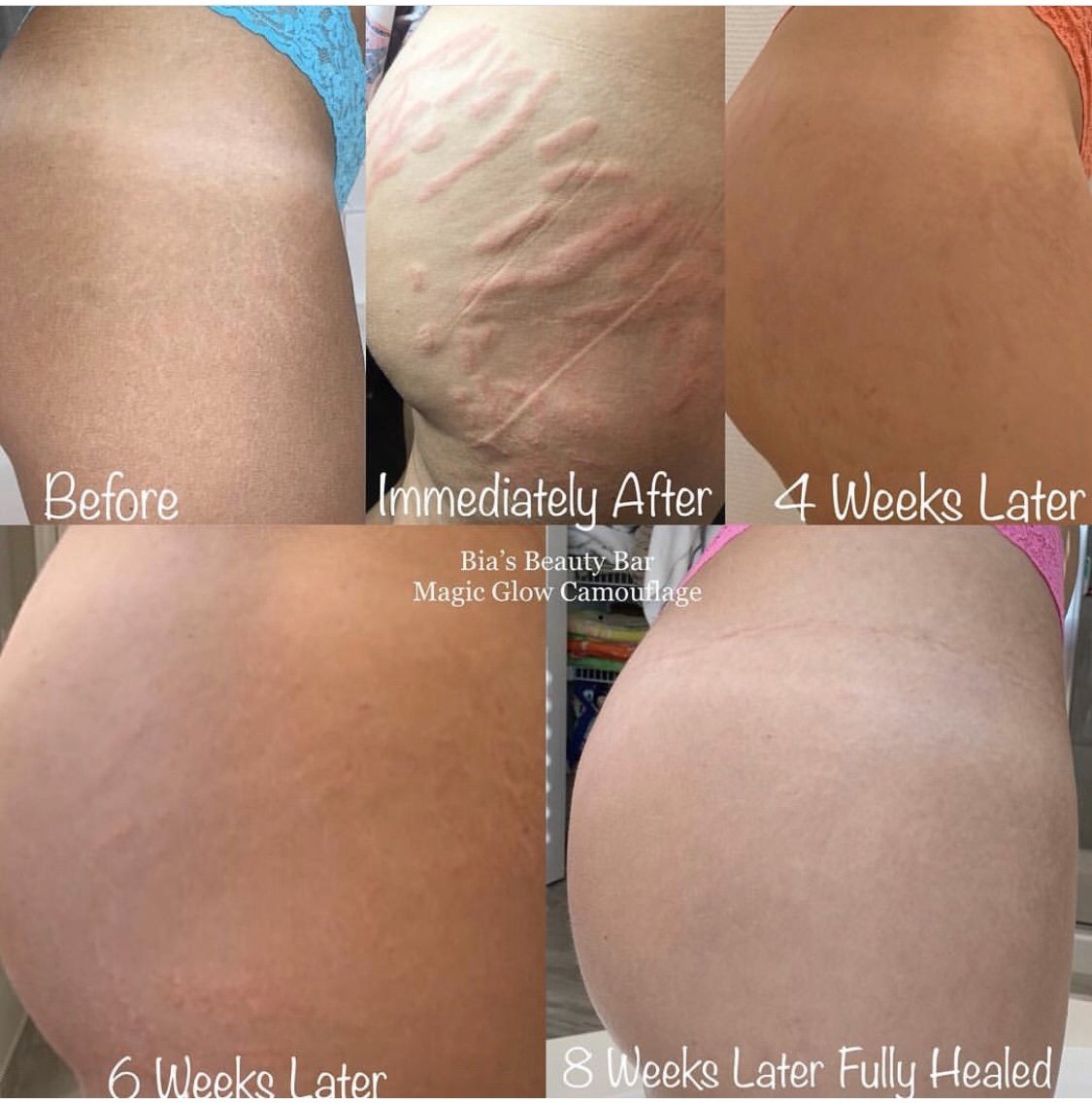brazilian Camouflage
Bianca Rodriguez, master Tech and Owner of Bia’s Beauty Bar is humbled to announce being the first studio in New York State to offer Brazilian Camouflage tattooing with 7 years of experience.
What is it?
This procedure originates in Sao Paulo, Brazil from Tattoo Artist Rodolpho Torres. Using specialized fleshed colored ink to disguise the look of stretch marks and scars. This procedure falls under the category of Medical or Paramedical Tattooing. This process is also called Corrective Pigment Camouflage (CPC), Corrective Camouflage, Skin Re-Pigmentation, or Scar Camouflage. The science behind pigments and the physiology of human skin and tissue must be understood by the specialist performing these procedures. These procedures require advanced knowledge, training, skills, and experience in permanent cosmetics as well as an artistic eye for color and skin tones.
-
You might be a candidate if you meet the following criteria below:
Your stretch mark or scar should be:
Fully Healed. This means no longer pink or changing color. Your scar should be a minimum of 2 years with a color lighter than your skin. If it is red, pink or still changing color it may still be healing. (If you are under a physicians care for this skin condition, you must get permission from him/her to undergo this procedure.)
Smooth and Relatively Flat. Camouflage tattooing cannot disguise or correct extreme changes in skin texture. If your scar or skin area is bumpy or raised, the process may not be effective. (If you have keloid scarring or any skin surface irregularities, please consult with a Dermatologist or Plastic Surgeon to see if you can improve the skin texture through a medical treatment first.)
Without Dark Edges: Dark edges or borders around a scar indicate Post Inflammatory Hyper-pigmentation (PIHP) from the initial trauma or surgery. It is possible that the camouflage tattooing process may increase the hyper-pigmentation and create a wider, darker border.
-
The procedure is permanent but it may require a touch up.
-
Multiple sessions may be required however you must avoid working out for at least two weeks after, the sun exposure until healed and moisturized.
-
At the session Bia will customize your shade with a unique formula to perfectly match your color. The Brazilian ink contains no iron oxides so it will not change even in the sun.
-
Avoid sun exposure in the days leading up to your appointment. Sunburned or sun-damaged skin may be more sensitive to the treatment and will alter your skin color for matching.
Avoid using harsh skincare products, such as exfoliants, retinoids, or chemical peels, in the treatment area for a month before your appointment. These products can make your skin more sensitive and may affect the outcome of the treatment.
Stay hydrated and drink plenty of water in the days leading up to your appointment to keep your skin hydrated and healthy. Hydrated skin tends to heal more effectively and may result in better outcomes from the treatment.
Avoid taking blood-thinning medications or supplements, if possible, in the days leading up to your appointment. These medications can increase the risk of bruising or bleeding during the treatment.
Arrive at your appointment with clean, makeup-free skin. Remove any makeup, moisturizers, or skincare products from the treatment area to ensure optimal contact and effectiveness of the Brazilian camouflage treatment.
Communicate any concerns or questions you may have with your permanent makeup artist or esthetician before the treatment begins. It's essential to discuss your skincare goals and any medical conditions or medications you are currently taking to ensure a safe and effective treatment experience.
-
Keep the area clean and dry for the first few days after the treatment. Avoid touching or rubbing the area unnecessarily to prevent irritation or infection.
Avoid moisture and getting the treated area wet, including swimming, bathing, or using saunas, for at least 48 hours after the treatment. Moisture can interfere with the healing process and cause the pigment to fade prematurely.
Avoid sun exposure and protect the treated area from direct sunlight and UV exposure as much as possible, especially during the initial healing period. Sunburned skin can cause the pigment to fade more quickly, so it's essential to wear sunscreen with SPF 30 or higher and protective clothing when outdoors.
Avoid using harsh skincare products, such as exfoliants, retinoids, or chemical peels, on the treated area for at least two weeks after the treatment. These products can irritate the skin and may affect the longevity of the pigment.
Avoid wearing makeup or applying cosmetics to the treated area for at least one week after the treatment. Makeup can introduce bacteria to the healing skin and may interfere with the pigment's retention.
Avoid picking, scratching, or rubbing the treated area as it heals. This can cause the pigment to become patchy or uneven and may lead to infection or scarring.
Follow-up with Bia with any questions and concerns you may have. She will provide more information in person that you may need concerning aftercare. She will encourage you to send pictures so assure your healing effectively.
-
Port Wine birthmarks; spider veins; freckles; age spots; under eye circles; hyper-pigmentation; or unstable Vitiligo (not in remission).
These can be improved with non-tattoo medical treatments such as lasers, sclerotherapy, or chemical peels. Please consult with a physician regarding the best course of treatment for these conditions text goes here

